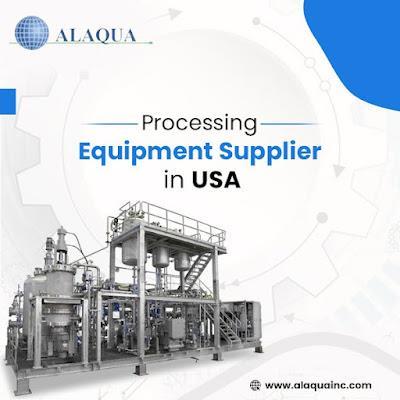Equipment Used For Food Processing
Modern food processing equipment includes a vast range of machinery, systems such as distillationequipment,crystallizers,evaporatorsystem,etc.,andcomponentsforhandling, cooking, preparing, storing, and packaging processed meals. Even while food processing equipmentisprimarilyusedtoimprovethepalatabilityanddigestibilityoffoodwhilealso extendingitsshelflife,varioustypesoffoodprocessingequipmentarealsoutilizedtoserve ancillarypurposes.Preparation,packing,andhandlingofprocessedgoodsfromoneendof afoodprocessingplanttotheotherareexamplesofthese.
The global market for food processing and handling equipment was assessed at $137.2 billionin2019.By2025,themarketispredictedtoreach$196.6billion,withaCAGRof6.2 percent.Thefoodprocessingindustry'svariousprocessingtechnologicalbreakthroughs,as

well as the industry's continued rise in demand, are likely to propel the industry's expansion even further in the future years. The growth of the equipment market will be supportedbytheriseoffoodproductioninemergingeconomies.
The uses of the food processing equipment services manufacturing cycle may be divided intomanystages.Thesearedistinguishedbyuniquedutiesthatwillbecarriedout during theexecutionofindividualunitactivities.Theprimaryfunctionofthepreparationstep,for example,istopreparethefoodforsubsequentprocessing.Washingandseparatingaretwo oftheunitactionsconductedduringthisstep.
Secondaryfunctionsthat assistthecorefunctionofthefoodproductioncyclemayalsobe foundthroughoutthefoodpreparationphase.Systemcontrolproceduresthatensurethat the required processing standards are met, as well as material handling systems that transport food materials between the various process stations, are some examples of the same.
Preparation, Mechanical Processing, Heat Processing, Preservation, Packaging, and MaterialHandling areonly a few of the mostprevalent purposesbywhich the equipment usedinfoodprocessingmaybecategorized.
Equipment for Food Preparation:
Within the food processing production cycle, there are early preparation activities that focus on preparing raw food resources for future procedures. Separation of the desired material from low quality or unacceptable material is a common food processing method utilized at this step. Manufacturers will be in a better position to create uniform, highquality food while removing any extraneous matter, pollutants, or pathogenic microbes that might deteriorate or damage the food or equipment, or cause food-borne diseases. Cleaning, sorting, grading, and peeling are examples of raw material preparation processing.
Cleaning - This procedure involves either wet or dry cleaning to remove foreign matter and impurities from the surface of the raw material. Flotation tanks, spray washers,sterilizers,andultrasoniccleanersareallpartofthewetcleaningprocess.
Air classifiers, magnetic separators, and screen separators are among the dry process'scomponents.
Sorting and Grading - Thisdeterminestheoverallqualityofthefoodbyassessing numerous qualities such as damage, color, fragrance, flavor, and so on. Tungsten lamps (candlelight) and a variety of different image processors were employed in theprocessing.
Peeling - It eliminates any inedible or unpleasant material from the finished product, improving its quality and appearance. Some of the food processing methods employed include pressure vessels for flash steam peeling, knife peeling with stationary or revolving blades, abrasive rollers for abrasion peeling or furnaces,andconveyorsforflamepeeling.

